Blood pressure is defined as the force of the blood on the walls of the arteries.
- The ventricles can hold ~70ml of blood, therefore during contraction that volume is displaced and pushed out to the aorta and further arteries.
- Due to this, arteries must be elastic and have expandable walls (more on structure later)
Blood Pressure depends on:
- Cardiac output = the amount of blood pumped from the heart each minute. Cardiac output is determined by multiplying the heart rate by the stroke volume.
- Stroke volume = the quantity of blood pumped with each heartbeat.
Since the heart is constantly contracting and relaxing (remember our ECG – T-wave = relaxation of ventricle) the blood pressure is not constant.
Think: When would blood pressure be higher in the arteries?

Blood pressure changes:
- When the ventricles contract, elastic connective tissue and smooth muscle in the walls of the arteries stretch to accommodate the increase in fluid pressure. (QRS Complex)
- Higher blood pressure
- After, the arterial walls recoil like an elastic band as the heart begins the relaxation phase. (T-wave)
- The recoil forces help push blood through arterioles toward the tissues.
- Lower Blood Pressure
That is why we get two blood pressure readings when we use a sphygmomanometer:
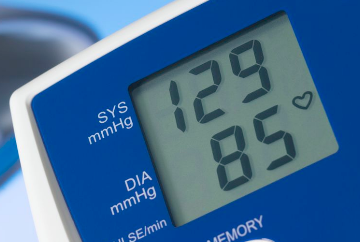
- Systolic Pressure (Systole) – Pressure during ventricular contraction.
- Diastolic Pressure (Diastole) – Pressure when ventricles are not contracting.(Atrial contraction/ventricle recovery)
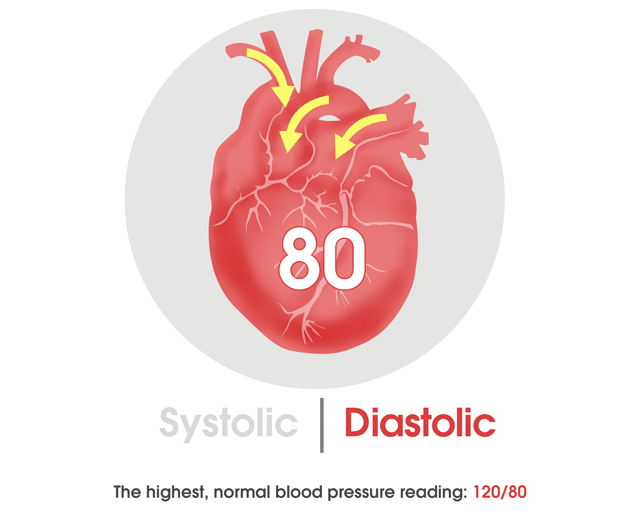
Sphygmomanometer – An instrument for measuring blood pressure (or that thing at safeway). Typically consists of a rubber cuff and mercury on a graduated scale.

Measuring Blood Pressure with a sphygmomanometer :
- Typically a cuff is placed around the arm to measure pressure on the brachial artery (off of subclavian artery)
- The cuff is pumped to cut off blood flow.
- Air is slowed released, allowing blood to move into the artery again. This will measure the systolic pressure.
- When the cuff relaxes, blood can move into the arteries freely. This allows for the diastolic pressure or relaxation period pressure to be measured.
For more detailed instructions and theory please refer to your “Blood Pressure and Cardiac Output Lab”

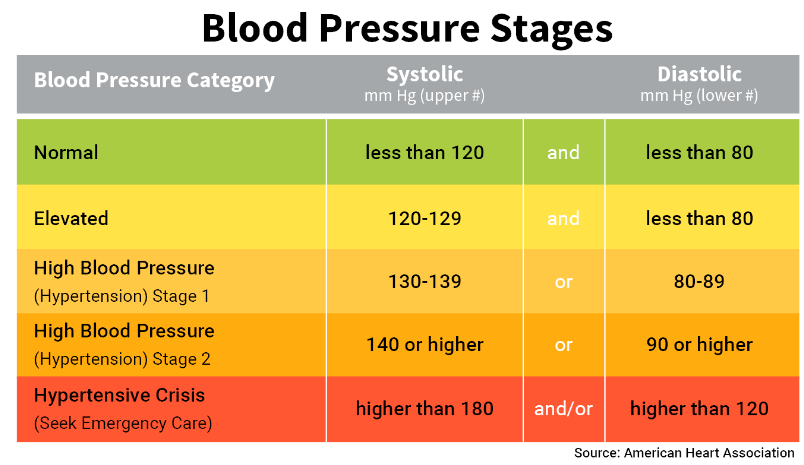
Blood Pressure: Some Related Health Issues
High Blood Pressure (Hypertension) – Often caused by diet and lifestyle. Stress/drugs can also lead to period of hypertension (Blood pressure > 140/90)
- Ex. Atherosclerosis – Hardening of arteries due to loss of elasticity. Caused by plaques (fatty deposits from digested food).
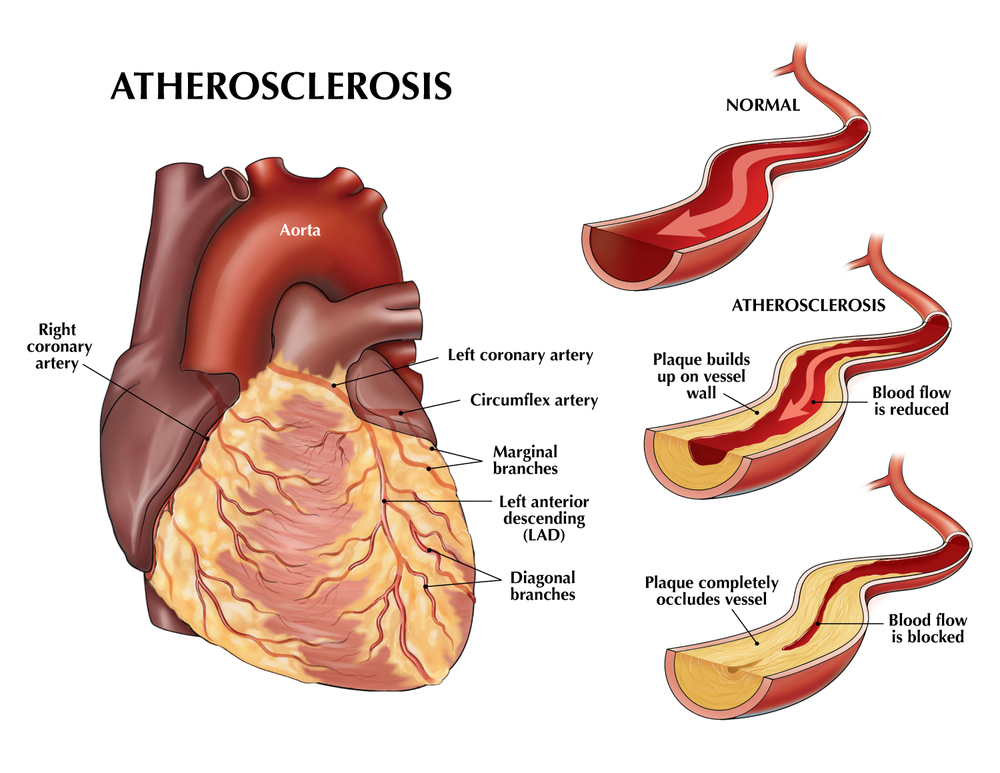
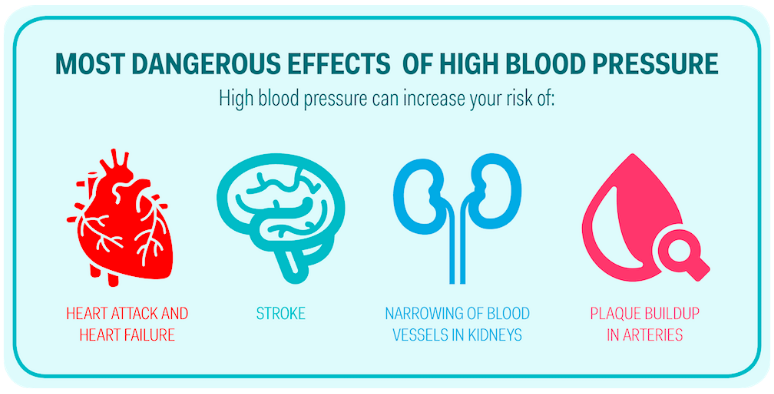
Low Blood Pressure (Hypotension) – Can be negative as well. (Blood Pressure lower than 90/60)
- Ex. Kidney cannot function without sufficient pressure for filtration.
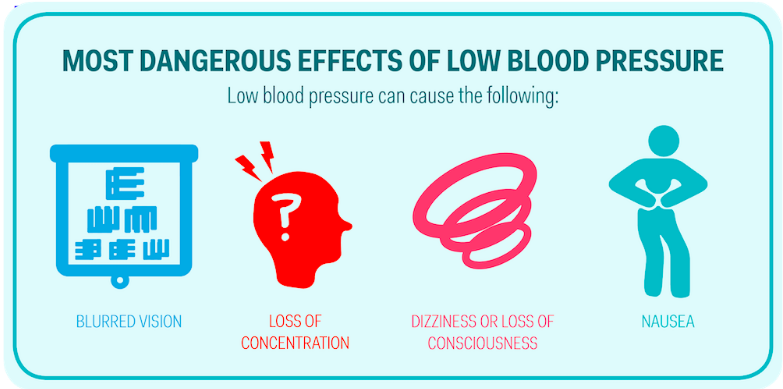
Blood Pressure Control and Homeostasis
Homeostasis – The movement towards stable conditions/equilibrium through physiological processes.
(i.e. release of hormones to dilate/constrict vessels, or to increase/lower heart rate).
Blood pressure is monitored by the medulla oblongata in the brainstem. (Monitors autonomic or involuntary functions).
- Body can dilate (widen) arterioles to lower blood pressure (Vasodilation)
- Body can constrict (narrow) to raise blood pressure. (Vasoconstriction)
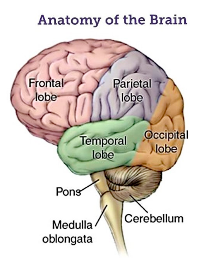
Medulla oblongata control and the autonomic nervous system:
Activation of sympathetic nervous system (fight or flight) increased heart rate therefore increase cardiac output and therefore increases blood pressure.
Activation of parasympathetic nervous system (feed and breed) lowers heart rate therefore lowers cardiac output and therefore lowers blood pressure.
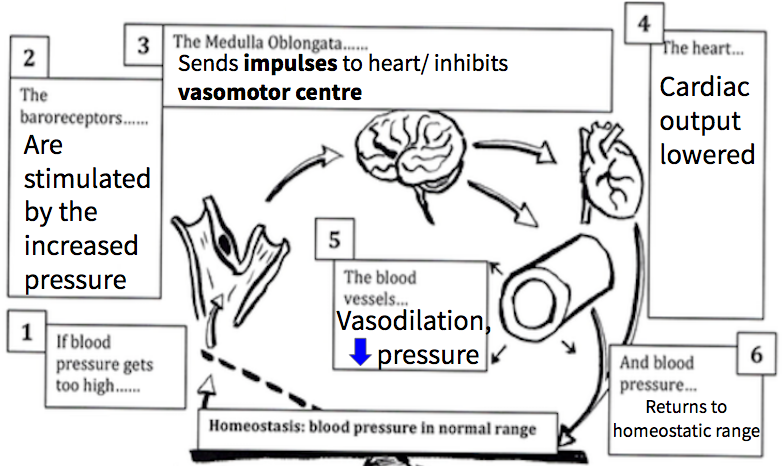
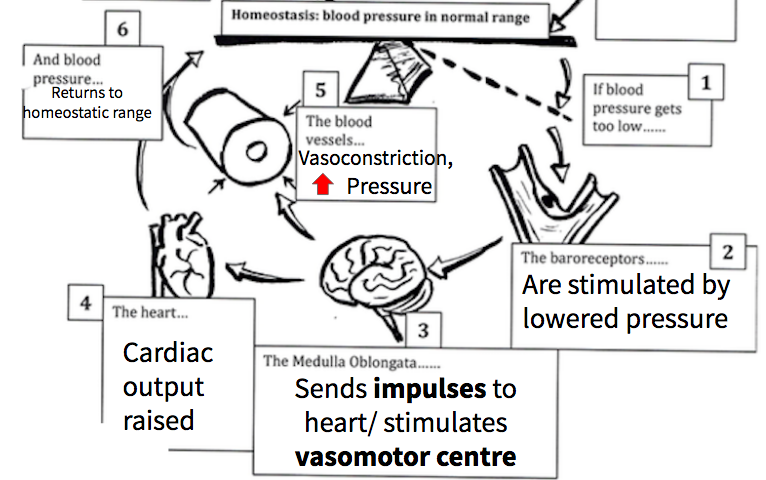
A Quick Review:
- Blood pressure = force on arterial walls. Arterials walls are elastic which allow for stretching and contracting during heart contractions.
- Systolic Pressure – Pressure during ventricular contraction (higher!)
- Diastolic Pressure – Pressure during ventricular relaxation (lower!)
- Measured with a sphygmomanometer – 120 systolic/80 diastolic = normal/ideal.
- Blood pressure is regulated by the medulla oblongata. Body tries to keep blood pressure stable and normal. Drugs/diet/lifestyle can lead to hypertension (high blood pressure). Hypotension (Low blood pressure) can cause kidney problems among others)
Comments by shaun pletsch